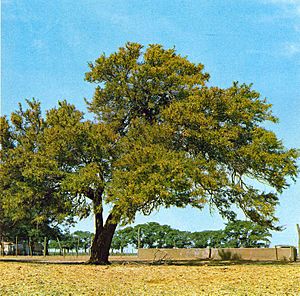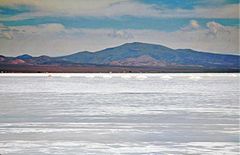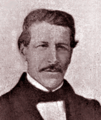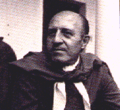Santiago del Estero Province facts for kids
Quick facts for kids
Santiago del Estero
|
||
|---|---|---|
|
||
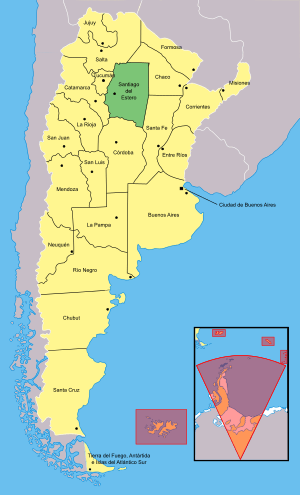
Location of Santiago del Estero within Argentina
|
||
| Country | Argentina | |
| Capital | Santiago del Estero | |
| departments | 27 | |
| Municipalities | 28 | |
| Area | ||
| • Total | 136,351 km2 (52,645 sq mi) | |
| Population
(2010)
|
||
| • Total | 896,461 (Ranked 12th) | |
| • Density | 6.6/km2 (17/sq mi) | |
| Demonym(s) | santiagueño | |
| Time zone | UTC−3 (ART) | |
| ISO 3166 code | AR-G | |
Santiago del Estero is a province located in the northern part of Argentina. It is known for its unique landscapes and rich history. The province is home to the Copo National Park, which protects many plants and animals. People from Santiago del Estero are called santiagueños.
Contents
Geography and Climate of Santiago del Estero
What is the Landscape Like?
Santiago del Estero is mostly flat land. It is part of a large area called the Gran Chaco. You can find some low areas where lagoons have formed. These lagoons are mainly in places like Bañado de Figueroa and Bañado de Añatuya. They are also near the Salado and Dulce Rivers.
In the southwest, you will find the Sumampa and Ambargasta mountain ranges. These are influenced by the Pampas region. The soil in the province has a lot of lime and salt. This makes it dry, with many semi-deserts and steppes.
What is the Weather Like?
The weather in Santiago del Estero is mostly sub-tropical. This means it is hot for most of the year. There is also a dry season, which happens during the winter. The average temperature is about 21.5°C (70.7°F). In recent years, this average has increased to 24°C (75.2°F).
Temperatures can get very high, sometimes reaching up to 50°C (122°F). It can also get cold, with temperatures sometimes dropping to -2°C (28.4°F). The province gets about 700 mm (27.5 inches) of rain each year. However, during the dry winter season, it only receives about 120 mm (4.7 inches) of rain.
Economy of Santiago del Estero
How Do People Make a Living?
The economy of Santiago del Estero mainly relies on farming. About 12% of what the province produces comes from agriculture. The main farming areas are near the Salado and Dulce Rivers. Important crops grown here include cotton, soybean, maize (corn), and onion. Santiago del Estero produces about 20% of Argentina's cotton.
What About Livestock and Trees?
Raising animals is also a big part of the economy. Cattle farming is common in the eastern parts of the province. This is where the weather is best for it. However, goats are raised in other areas. The province produces 15% of Argentina's goats.
The wood industry is also important. Trees like quebracho and algarrobo are harvested. People also plant new trees. Each year, over 300,000 tons of wood are produced. About 100,000 tons are used for timber. The rest is used for firewood and charcoal.
Are There Other Industries?
There is not much mining in the province. However, some salt is collected from the salt flats in the southwest. Manufacturing is a smaller part of the economy. It makes up less than 10% of what the province produces. This includes small businesses that make food, textiles (like cloth), and leather products.
What About Tourism?
Tourism is growing in Santiago del Estero. Visitors come to see the capital city, also called Santiago del Estero. This is the oldest city in Argentina. People enjoy its historical buildings and museums.
Another popular spot is Termas de Río Hondo. This town is famous for its hot springs. It has over 200 hotels for tourists. The Frontal dam is also a great place for water sports.
The province also has several protected natural areas. These include the Copo National Park. Other protected areas are Bañados de Figueroa, Sierras de Ambargasta, Sierra de Guasayan, and Sierras de Sumampa. These places help protect the unique plants and animals of the region.
Images for kids
-
Argentine artists relax at the Río Hondo Hot Springs, 1958.
See also
 In Spanish: Provincia de Santiago del Estero para niños
In Spanish: Provincia de Santiago del Estero para niños


